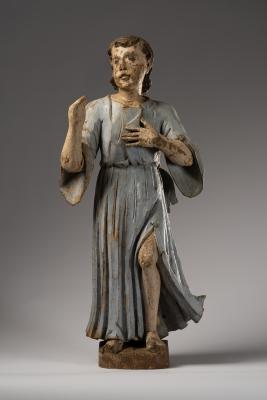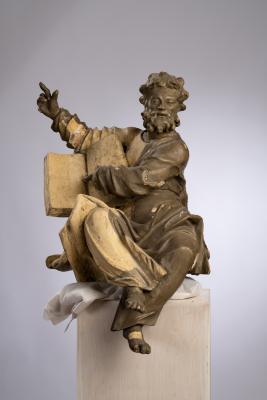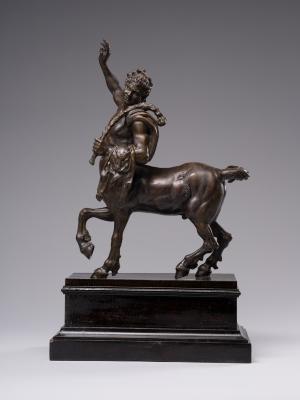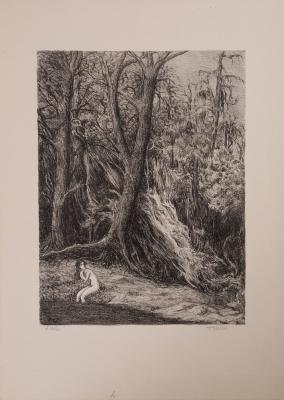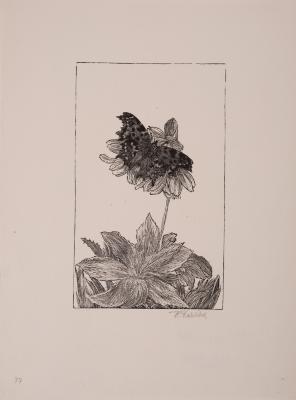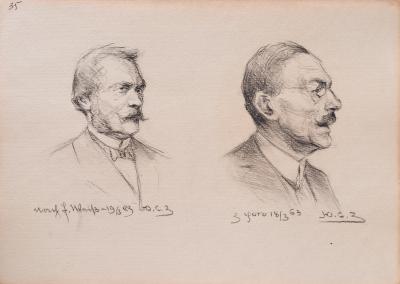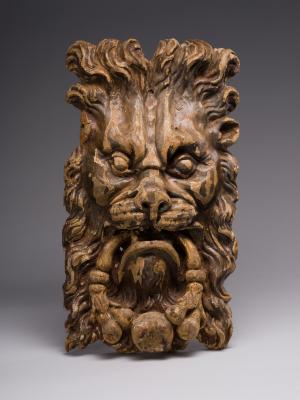The first version of the engraving is unknown. The Lviv version probably dates back to 1816. This composition is from the Neapolitan series. In the foreground on the left is a young man, a cheese seller, with weight scales lifted up, on which he puts a cut piece of cheese. To his right is a young woman with a basket in her left hand; she touches the weight scales with her right hand. Between these two characters is a figure of a boy sitting on his knees with a large piece of cheese on a wide wicker tray. The characters are dressed in typical Neapolitan clothing, with the hats protecting them from the sun. The woman resembles a classical antiquity figure; the artist repeatedly drew on classical forms in his early creative work. The action takes place on the coast of the Bay of Naples with sailboats in the sea and hills in the distance. The characters are painted with bright watercolours, with prevailing red, blue, and yellow ocher ones.













